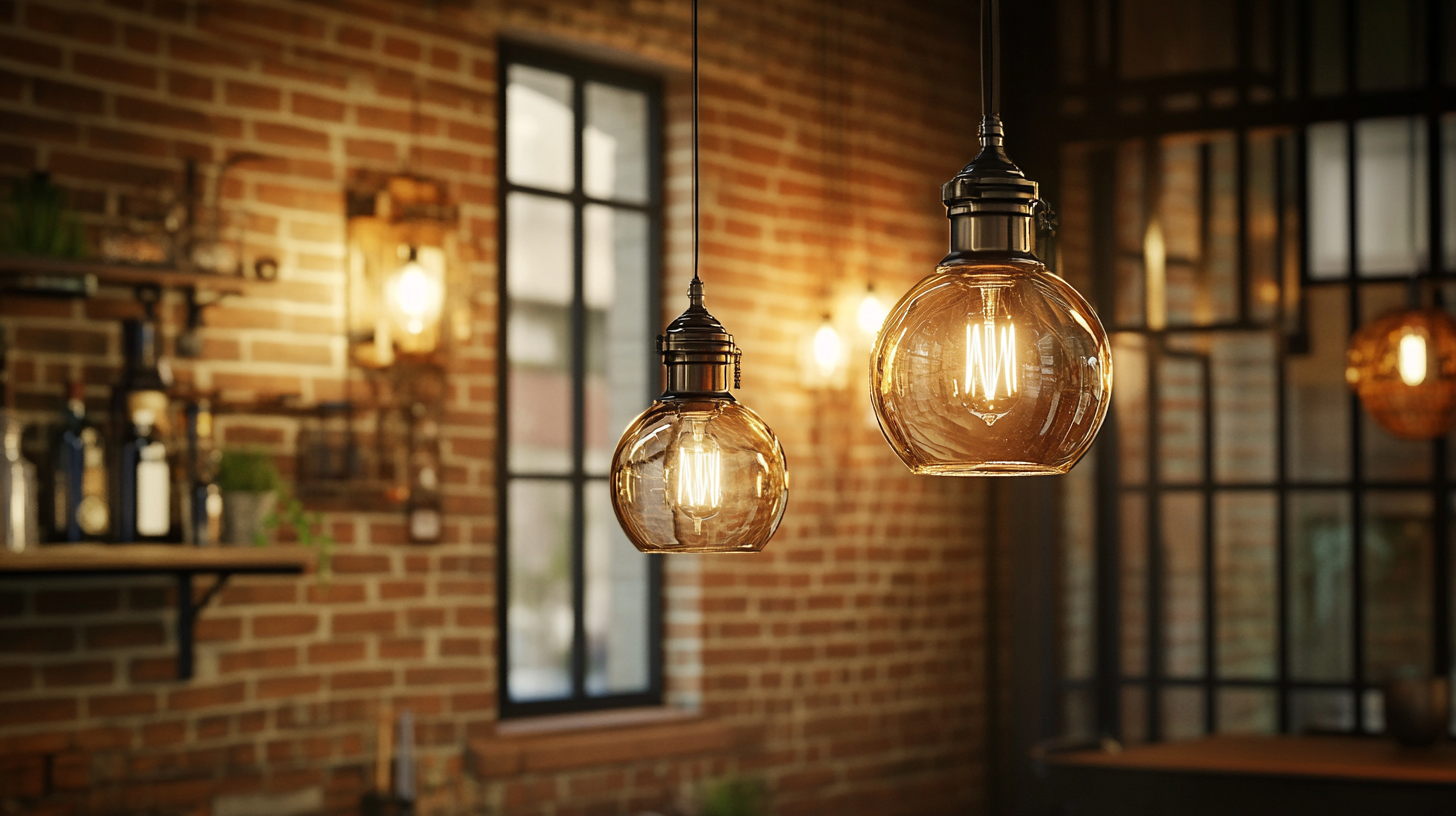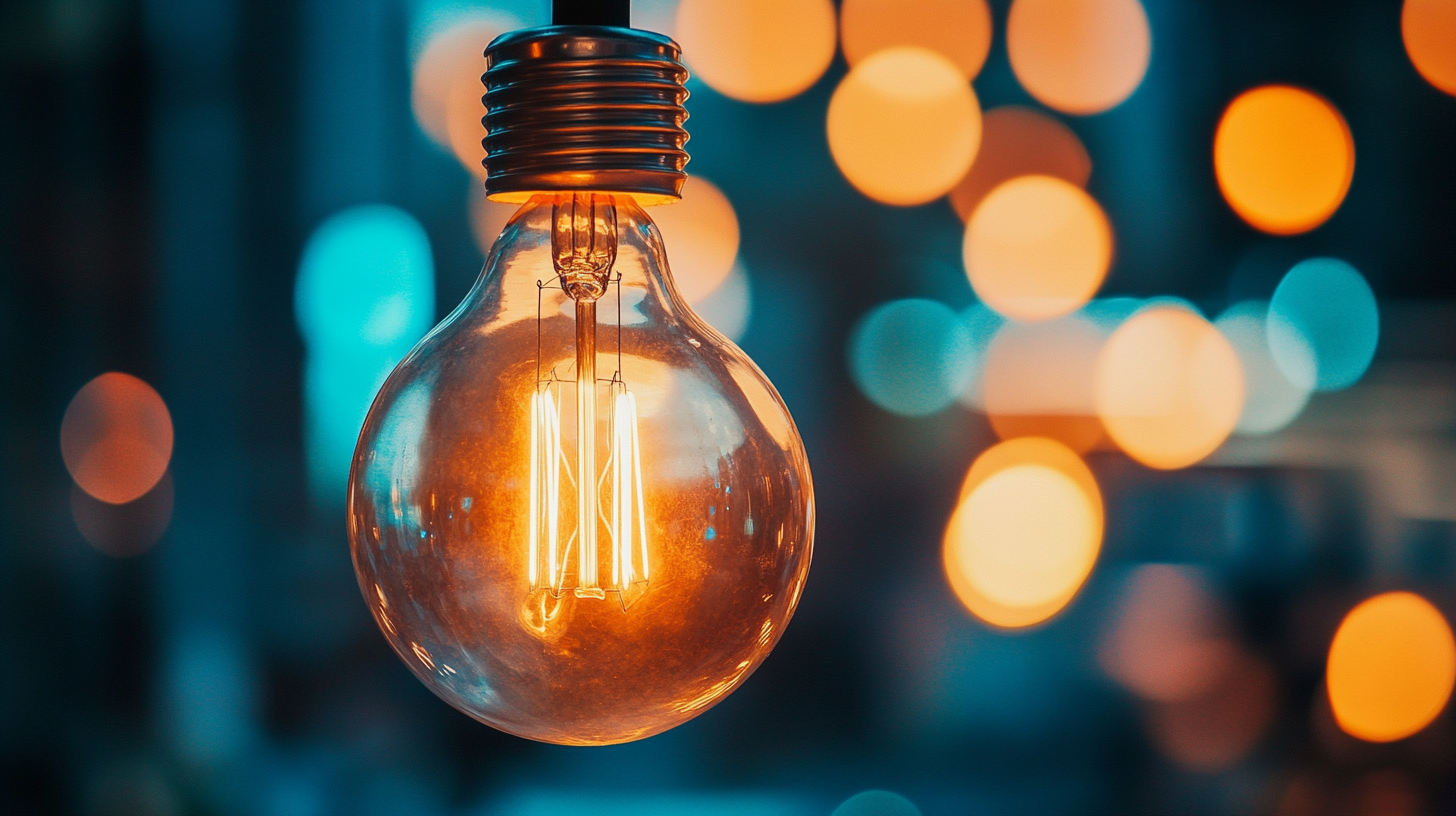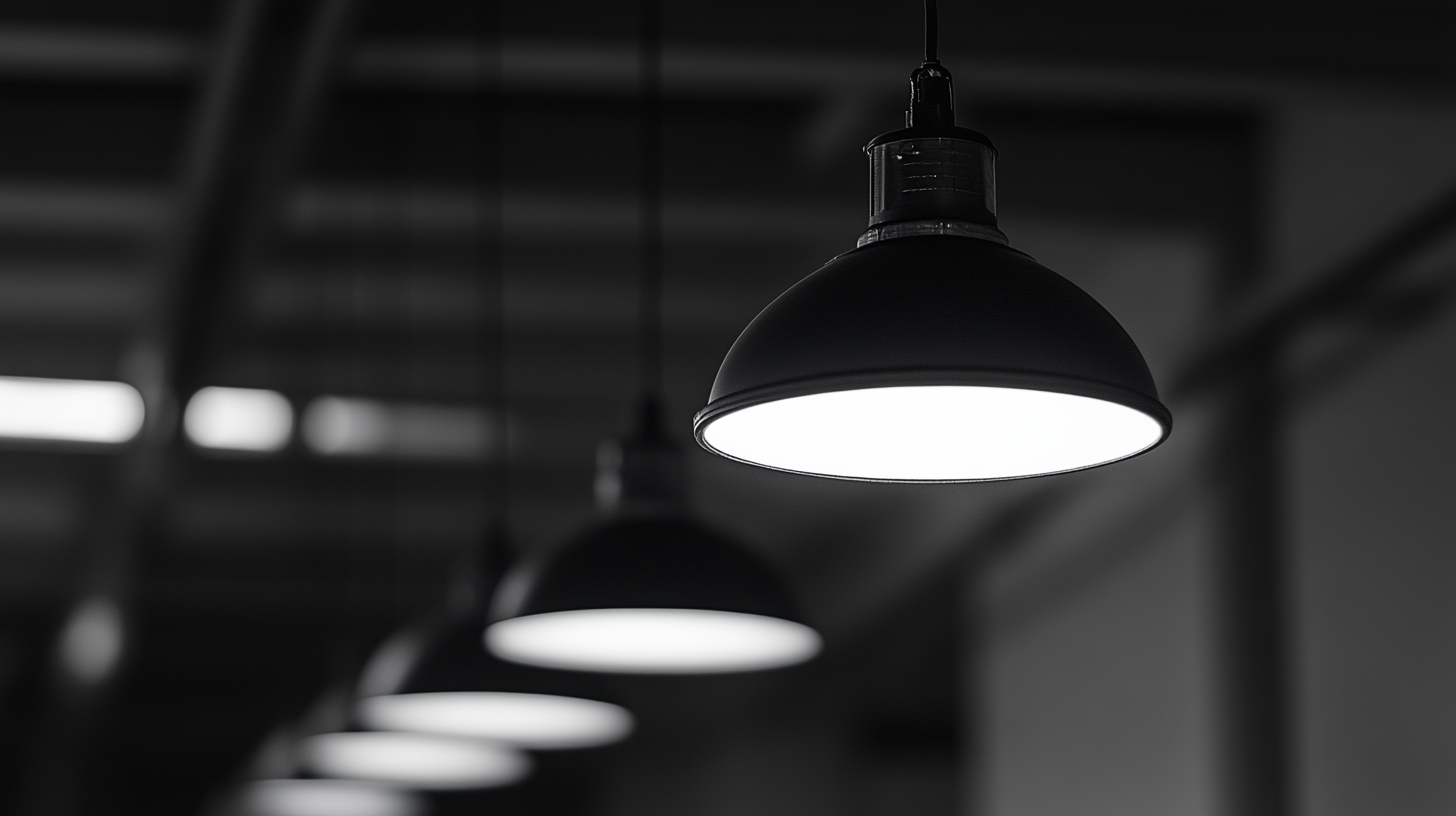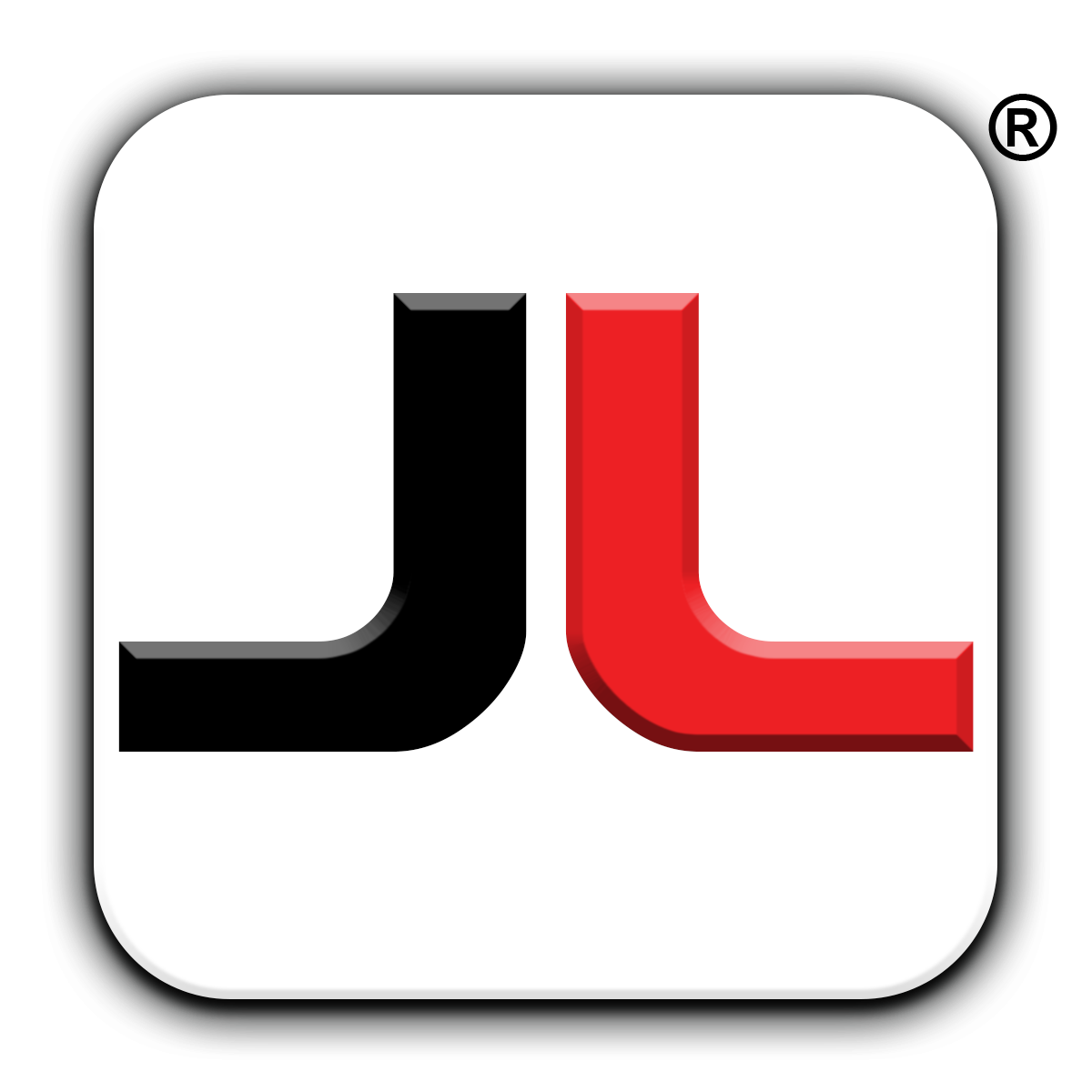Challenges in Sourcing Quality Industrial Lighting Fixtures Amid Global Variability
In today's rapidly evolving global market, sourcing quality industrial lighting fixtures has become a complex challenge for businesses striving to meet both performance standards and aesthetic demands. With various factors influencing availability and standards—from shifting international regulations to supply chain disruptions—manufacturers and distributors face a multitude of hurdles. Ensuring that the lighting solutions they procure not only illuminate spaces effectively but also comply with safety and energy efficiency standards is more critical than ever.
Moreover, the increasing variability in global manufacturing processes introduces further uncertainties in obtaining consistent quality. As companies navigate these challenges, it becomes essential to establish reliable partnerships and leverage innovative technologies to optimize sourcing strategies. Addressing these issues comprehensively will not only enhance operational efficiency but also lead to sustainable growth in the industrial sector. Ultimately, understanding the intricacies involved in sourcing industrial lighting fixtures can empower businesses to make informed decisions that align with their long-term goals.

The Impact of Global Supply Chain Disruptions on Industrial Lighting Quality
The global supply chain disruptions caused by events such as the COVID-19 pandemic have significantly impacted various industries, including the sourcing of quality industrial lighting fixtures. According to a report by McKinsey, 75% of companies experienced supply chain disruptions in 2020, highlighting the fragility of global supply networks. These disruptions have led to increased lead times and reduced availability of essential components, which are crucial for producing high-quality industrial lighting solutions. Furthermore, a study by Deloitte indicates that 33% of manufacturing companies are struggling to maintain the quality of their products due to inconsistent supply from vendors. This inconsistency often stems from reliance on overseas suppliers who are unable to meet production requirements or standards during times of crisis. For industrial lighting fixtures, this can mean sourcing materials from subpar suppliers, leading to compromised quality and safety standards. With lighting being integral to workplace safety and efficiency, any decline in quality can have serious implications for businesses. Another significant factor is the rising cost of raw materials and transportation. In 2021, the price of aluminum, a primary component in many lighting fixtures, surged by 20%, as reported by the London Metal Exchange. These increased costs not only strain budgets but also push manufacturers to seek cheaper alternatives, further affecting quality. As companies navigate these turbulent times, ensuring the integrity of industrial lighting fixtures while managing supply chain challenges remains a pressing concern in the industry.

Understanding Lighting Standards and Regulations Across Different Regions
Navigating the myriad lighting standards and regulations is a significant challenge for manufacturers sourcing industrial lighting fixtures globally. Each region establishes its own set of guidelines, influenced by local economic conditions, environmental concerns, and safety requirements. For instance, the European Union implements strict energy efficiency standards as part of its commitment to sustainability, which can differ substantially from regulations in North America or Asia. Understanding these regional variances is crucial for companies looking to ensure compliance and maintain a competitive edge.
In regions like the United States, standards set by organizations such as the American National Standards Institute (ANSI) and the Illuminating Engineering Society (IES) provide a framework for safety and performance. In contrast, the International Electrotechnical Commission (IEC) standards pertain to a broader international audience, but adherence can be complicated by local adaptations. Manufacturers must be diligent in researching these requirements to avoid costly penalties and ensure their products are market-ready.
Moreover, emerging markets are increasingly establishing their own lighting codes, which can reflect a blend of international regulations and local customs. This ongoing evolution in standards poses both challenges and opportunities, as companies that proactively adapt to these changes can foster innovation and drive market demand for energy-efficient solutions. Addressing these complexities is essential for successful global operations in the industrial lighting sector.

Evaluating Supplier Credentials: Key Metrics for Quality Assurance in Lighting Fixtures
When sourcing industrial lighting fixtures, the complexity of ensuring quality is compounded by the global variability in supplier capabilities. Evaluating supplier credentials is critical to establishing quality assurance. Key metrics to consider include compliance with international standards, certifications, and a track record of reliability in delivering robust lighting solutions.
First, assessing compliance with relevant industrial standards, such as ISO and ANSI, provides a benchmark for quality assurance. These standards often dictate performance criteria and safety protocols, ensuring that the products meet the necessary regulatory requirements. In addition to compliance, certifications from recognized entities can serve as a testament to a supplier's commitment to quality, fostering greater confidence in their products.
Another important metric is the supplier's history of performance. This includes their ability to fulfill orders consistently and their responsiveness to client needs. Requesting case studies or references from previous clients can provide insight into the supplier's reliability. Additionally, examining the variety of projects they have undertaken can help gauge their adaptability to different environments and challenges, which is essential for sourcing lighting fixtures that perform under diverse conditions. This comprehensive evaluation ensures that the chosen supplier not only meets quality standards but also aligns with specific project demands.

The Role of Technological Advancements in Enhancing Lighting Fixture Quality
The advancement of technology plays a pivotal role in enhancing the quality of industrial lighting fixtures amidst the challenges of global variability. As industries undergo digital transformation, the integration of smart technologies has revolutionized how lighting fixtures are designed, produced, and used. Innovations such as LED technology and IoT-enabled systems have significantly improved energy efficiency and longevity, fulfilling the growing demand for sustainable solutions.
Moreover, advanced manufacturing techniques like 3D printing and automation are enhancing precision in production. These technologies allow manufacturers to create bespoke lighting solutions tailored to specific industrial needs, addressing not only quality but also the diverse preferences of different markets worldwide. As suppliers leverage these advancements, they are better positioned to maintain consistency and adhere to international standards, ensuring that products are reliable and meet the rigorous demands of various industries.
In addition to manufacturing improvements, technological advancements also facilitate better quality control. Machine learning and data analytics enable real-time monitoring and predictive maintenance, minimizing the risk of fixture failures in operational environments. As a result, businesses can achieve greater productivity and reduce overhead costs associated with lighting maintenance. By embracing these technological innovations, the industrial lighting industry can overcome sourcing challenges and deliver high-quality fixtures that enhance operational efficiency across the globe.
Strategies for Mitigating Risks in Sourcing Industrial Lighting Solutions Globally
In the face of increasing global variability, sourcing quality industrial lighting fixtures poses significant challenges for businesses. The fluctuating economic environment, influenced by systemic risks and market uncertainties, compels companies to be vigilant in their procurement strategies. Adopting a proactive approach to risk mitigation is crucial in ensuring the availability of reliable lighting solutions while maintaining quality and cost-effectiveness.
One effective strategy for mitigating risks in sourcing is diversifying suppliers. By establishing a network of multiple suppliers across different regions, companies can reduce their dependency on a single source, thereby minimizing the impact of regional disruptions. This approach not only fosters competitive pricing but also enhances resilience against geopolitical tensions and logistical hurdles. Additionally, companies should prioritize building strong relationships with suppliers who adhere to rigorous quality standards to ensure that the products meet necessary safety and performance criteria.
Implementing robust inventory management and demand forecasting techniques is another critical strategy. By leveraging data analytics, businesses can anticipate fluctuations in demand and adjust their sourcing accordingly. This not only helps in reducing excess inventory costs but also ensures that suppliers can meet the specific requirements in a timely manner. Furthermore, staying informed about market trends and global economic indicators will enable companies to make well-timed decisions, safeguarding their operations against unforeseen circumstances.
Quality Commercial LED Lighting specializing in LED Tubes, LED Bulbs, LED Troffers, LED Door Kits, LED Retrofit Kits, LED Panels, LED Spot Lights, LED Wall Packs, LED Lamps, LED Drivers, LED Accessories, LED Lights, LED Sales, and LED Manufacturing. Headquartered in Atlanta, Georgia, USA.
